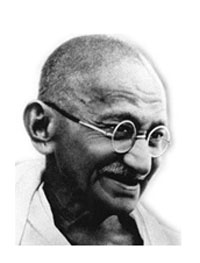This Day in History: September 11, 1906
Additional Date: September 11, 1906
Born in 1869 at Porbandar, Gujarat, India, the internationally prominent Indian campaigner, Mohandas Gandhi, led the 1906 Satyagraha Passive Resistance Campaign staged in Transvaal (now known as Gauteng Province), Union of South Africa. The campaign was prompted by the introduction of the Asiatic Law Amendment Ordinance in Transvaal by the Transvaal Assembly. The law required that every Indian, including children over eight years, had to register with a government official, the Registrar of Asiatics. The Registrar would take their fingerprints and issue them with a registration certificate, which they had to produce on demand. Indians who could not produce a certificate could be fined and sent to prison. The Transvaal Indian Congress (TIC) requested Ghandi to come to the Transvaal to help interpret and oppose the Act. A mass meeting was held at the Empire Theatre in Johannesburg, attended by thousands of people who vowed not to observe the law. This marked the beginning of the eight-year-long Satyagraha Passive Resistance Campaign emulated by other similar campaigns such as the 1946 Passive Resistance Campaign, the 1952 Defiance Campaign and 1960 Sharpeville Massacre.
